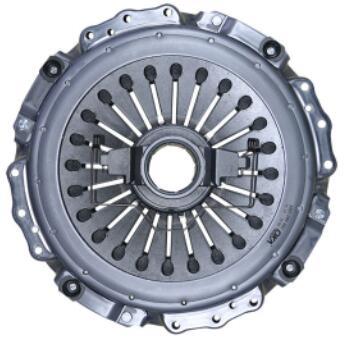The Difference Between The Push Type And The Pull Type Of The Friction Disc Clutch

According to the fulcrum on the pressure plate, the clutch is mainly designed as two types of friction disc clutches. The two types are push and pull. The design differs in pedal force and clamping load. Using the same pedal force, the clamping load of the pull clutch is estimated to have increased by 30%. Therefore, pulls are more common in heavy-duty applications due to the additional demands on torque and horsepower.
Push and Pull
Push clutches are common in light and older medium-duty vehicles. When you depress the clutch pedal on the clutch, the release bearing is pushed into the clutch and the diaphragm spring lets you shift gears.
Pull clutches are common in heavy-duty vehicles. When you depress the clutch pedal, the release bearing pulls away from the clutch. This pulls on the diaphragm spring, allowing you to change gears.
But the general working principle I believe you already know. The flywheel is bolted to the engine crankshaft. The clutch cover assembly, which is splined to the transmission, is bolted to the flywheel. Because they are bolted together, it keeps the engine and transmission turning at the same speed.
When you depress the clutch pedal, the clutch linkage or hydraulic system pushes the clutch release fork (yoke), which in turn depresses the clutch release bearing. This action activates the pressure plate away from the flywheel, thereby releasing the clutch plate of the pressure plate and flywheel. Then you can shift smoothly.
When you take your foot off the pedals and engage the clutch, the spring tension inside the cover assembly forces the pressure plate against the clutch plate. Since the assembly is bolted to the flywheel, it locks the engine to the transmission input shaft. They will spin at the same speed again, transferring engine torque to the transmission.
Taizhou Benwo Auto Parts Co., Ltd. is a Sachs Clutch Suppliers from China. The company mainly provides racing clutch kit and other clutch components.
- Art
- Causes
- Crafts
- Dance
- Drinks
- Film
- Fitness
- Food
- Jocuri
- Gardening
- Health
- Home
- Literature
- Music
- Networking
- Alte
- Party
- Religion
- Shopping
- Sports
- Theater
- Wellness
- IT, Cloud, Software and Technology


